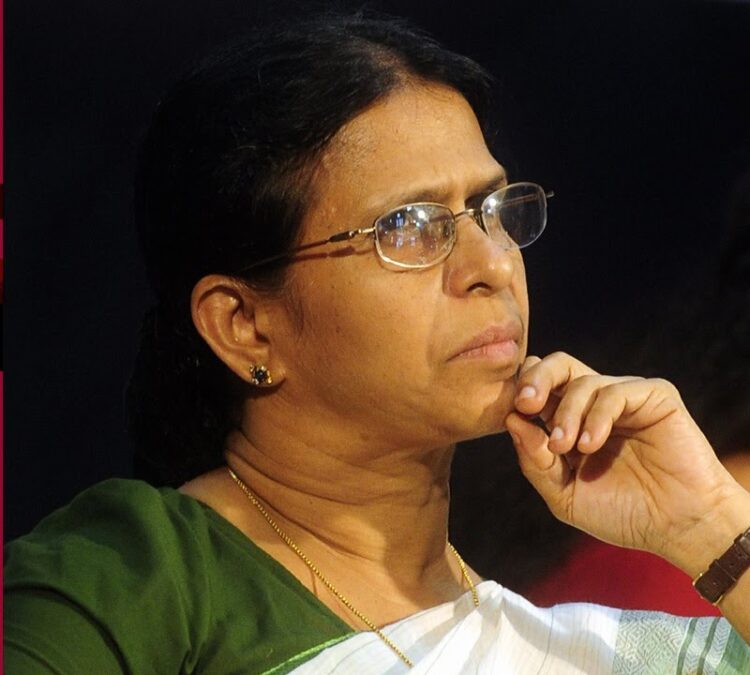The landscape of Indian education has undergone numerous reforms; however, National Curriculum Framework (NCF) 2023 prominently features elements that praise Savarna ideology, tradition and practices. This indicates an attempt by the administration to infuse these ideologies into the education system. Given India’s rich diversity in culture, caste, and religion, this approach is harmful, as it marginalizes those who do not identify as Savarna. By promoting such ideologies, the administration risks excluding and undermining the voices and experiences of a significant portion of the population. Furthermore, in the present Indian scenario, the absence of even a mention of secularism in a framework designed for a secular country like India is not surprising.

The overemphasis on Savarna ideology, tradition and practices is clearly evident in NCF 2023. The first chapter of Part A, titled ‘Aims and Curricular Areas of School Education,’ discusses the theory of knowledge, or pramana-sashtra, as a vital area of classical Indian philosophy characterized by rich debates on the acquisition of knowledge, distinguishing between various schools of thought (darsanas) (p.55).
NCF 2023 states that education is viewed as the integral growth of panchakosha, which refers to the five levels or aspects of our being. The concept of Panchakosha in the Taittiriya Upanishad is one of the earliest articulations of the different domains of human development. This ancient Indian concept explains the body-mind complex within human experience and understanding. According to the Panchakosha framework, the child is seen as a whole being, comprising five sheaths: annamaya kosha (physical layer), pranamaya kosha (life force energy layer), manomaya kosha (mind layer), vijnanamaya kosha (intellectual layer), and anandamaya kosha (inner self). Each layer has distinct characteristics but remains interconnected, ensuring that the development of one contributes to the others (p.69).
Third chapter, “Approach to Learning Standards, Content, Pedagogy, and Assessment” of Part A notes that there has long been an ancient tradition of questioning in India. Debate and discussion have always been held as a critical part of the Indian knowledge tradition. The Upanishads were written in response to the questions of shishyas. The literal meaning of the word Upanishad is the sitting down (of the shishya) near (the guru). The usual method of argument utilised reason and went from simple to complex, from concrete to abstract, and from known to unknown (p.103).
Second chapter of Part B, “Rootedness in India and Indian Knowledge Systems,” states that yoga, while often understood today primarily through asanas (postures) and pranayama (breath control), traditionally encompasses a much broader scope. Rooted in ancient India, yoga means ‘union’ and appears in the Upanishads as systems for self-mastery, self-discovery, or realizing the Self (atman). Patanjali’s Yoga Sutras (a few centuries BCE) emphasize calming the mind, with asanas and pranayama as aids. Other key paths, as seen in the Bhagavad Gita, include jnana yoga (self-knowledge), bhakti yoga (devotion to the Divine), and karma yoga (selfless action, or niskama karma). All aim for inner peace, emotional control, and focus, transforming lives and influencing Indian literature, art, and society. Yoga remains one of India’s most valuable contributions to global knowledge and shapes India’s educational philosophy deeply (p.146).
The term ‘secularism’ was introduced in 1976 through the 42nd Amendment of the Constitution. Given India’s diversity of religions, secularism is a fundamental principle. As a secular country, India’s curriculum should embody this concept. Although NCF 2023 includes numerous values deemed traditional to India, secularism is notably absent.
The chapter also highlights that although discussions often center around developments in ‘Mathematics and Astronomy,’ it is important to acknowledge that astronomy actually preceded mathematics in many early civilizations, including India. A few thousand years ago, Vedic texts knew about lunar and solar years, equinoxes and solstices, solar eclipses, divided the year into six ritus or seasons of two months each, and gave the first list of 27 nakshatras or lunar mansions. Because of the need to keep time for agriculture (the proper time to sow crops and harvest them), for festivals, and for the proper conduct of rituals, calendrical astronomy became very precise in India, with several systems of intercalary months (adhikamasa) to compensate for the difference between the lunar and the solar years. Later, huge scales of time were conceived by Jain and other scholars to account for the cycles and duration of the universe. The solar zodiac with its 12 rashis was introduced, as well as the seven-day week, among other concepts. During the classical period, sophisticated techniques evolved to calculate the positions at any given time of the sun, the moon, or the five planets visible to the naked eye, and also the occurrences and parameters of solar and lunar eclipses (p.153).
Additionally, in the third chapter, “Learning about and Caring for the Environment,” of Part B, the Yajurveda—one of the four ancient Indian texts—advocates for harmony with nature by perceiving all elements of the natural world as ‘friends.’ These hymns emphasize that human well-being is linked to the welfare of nature, advocating no harm to any ‘relatives’ in the ecosystem. A whole branch of Ayurveda, Vrikshayurveda, was dedicated to the treatment of trees and other plants, including crops before and after the sowing of seeds. While some forests were cleared for agriculture, others were protected just as today’s wildlife sanctuaries (as prescribed in the Arthashastra) (pp.171,172).
In NCF 2023, in the Preparatory Stage, ethical values are best learned through simple stories selected from India’s vast repository of narratives, such as the Panchatantra, Hitopadesha, and Jataka tales (164). The Illustrative Content Area (Content Area 3: Ethics) for Philosophy in Grades 11 and 12, suggests that students will cultivate practical problem-solving skills and reflect on ethical living through the study of both Indian and Western. Furthermore, in Content Area 5: Environmental Philosophy, encourages students to engage with complex questions related to environmental issues, such as responsibility for climate change, the ethical implications of environmental damage, and the rights of non-human animals. Through this content area, students are introduced to philosophical perspectives on the environment from both Indian and Western traditions, including ideas from the Vedas, Upanishads, Charaka Samhita, Matsya Purana, Panchatantra, Jataka, and influential figures like Gandhi and Amartya Sen (p.478). However, the representation of Indian tradition in this curriculum, limited to texts like the Panchatantra, Jataka, Hitopadesh, and Purusarthasiddhyupaya etc. reflects a narrow, Savarna-centered perspective on ethics.
These observations indicate that the terms used and the so-called Indian traditions clearly reflect Savarna ideology. Propagandists of NCF 2023 argue that the essentials for a curriculum framework are deeply rooted in Indian tradition itself, asserting that this approach honors the cultural and historical legacy of the nation. However, this claim raises important questions about inclusivity and representation, as it overlooks the diverse perspectives that exist within Indian society. The emphasis on Savarna traditions in educational policies risks marginalizing the voices and contributions of various communities that have been historically excluded from the mainstream narrative. This raises a critical issue regarding the authenticity of the so-called Indian traditions being referenced. Yet, it is truly astonishing to ponder whose tradition is being invoked!
The term ‘secularism’ was introduced in 1976 through the 42nd Amendment of the Constitution. Given India’s diversity of religions, secularism is a fundamental principle. As a secular country, India’s curriculum should embody this concept. Although NCF 2023 includes numerous values deemed traditional to India, secularism is notably absent. Ironically, this principle was included in NCF 2005, yet both NEP 2020 and NCF 2023 have explicitly excluded the term. In the quest to cultivate ethical reasoning among students, NCF 2023 promotes traditional Indian values such as seva, ahimsa, swacchata, nishkama karma, and satya—terminologies drawn from Savarna textbooks. These values are deemed essential for the progress of society and India as a whole. Although the framework underscores the significance of moral, scientific, and ethical values, it ironically neglects one of the most essential values enshrined in the Indian Constitution: secularism. One must wonder how a framework aiming to instill such noble ideals could forget to include secularism, as if the concept were merely an inconvenient footnote in the grand narrative of India’s diverse tapestry. After all, fostering a society rooted in traditional values while sidelining secularism is analogous to hosting a potluck dinner while neglecting to invite half the guests!

